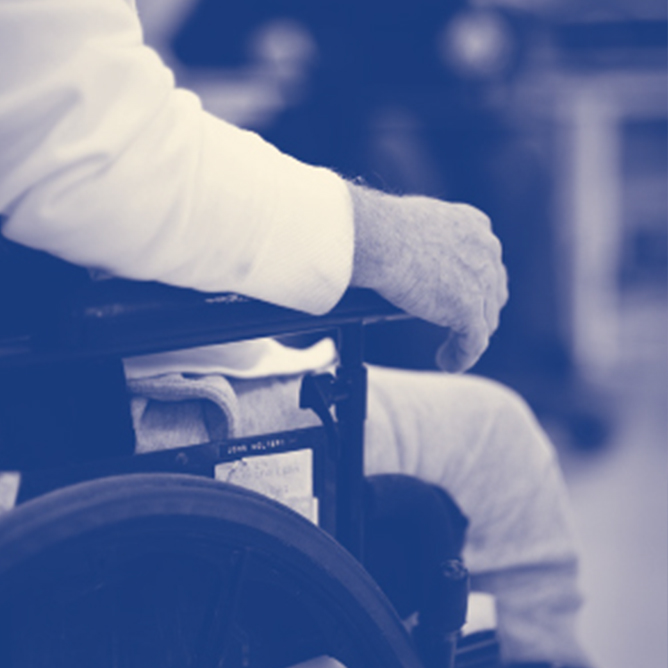Capsule pour l’action pour LM (2nd ed., 2013)
Les 3 critères d’IU en présence de LM sont : (1) bactériurie significative (2) pyurie (3) présence de signes et de symptômes.
Le problème:

Les personnes ayant une lésion médullaire (LM) présentent un risque accru d’infection urinaire (IU). Elles présentent souvent une bactériurie asymptomatique ou des cellules dans l’urine, ce qui ne constitue pas une IU.
Pratiques d’excellence fondées sur des preuves:
En présence de LM, le déficit sensitif rend difficile le diagnostic d’IU à partir de malaises mictionnels (dysurie, urgence mictionnelle, polyurie). En outre, la pyurie et la bactériurie asymptomatiques sont fréquentes en cas de LM. Il importe donc de ne pas confondre colonisation bactérienne asymptomatique (pratiquement inévitable dans la LM) et infection symptomatique.
La confirmation d’un diagnostic d’IU, en présence de LM, nécessite donc les trois critères énumérés ci-dessous:
- Bactériurie significative
- ≥ 102 ufc /ml si cathétérisme intermittent
- ≥ 104 ufc /ml si prélèvement à mi-jet chez un homme sans sonde (collecte externe par condom)
- ≥ 104 ufc/ml si vidange spontanée de la vessie
- Toute concentration détectable si sonde à demeure.
- Pyurie
- ≥ 50 leucocytes/cfg
- Signes et symptômes
- Un énoncé ou plus : (a) inconfort ou douleur aux reins, à la vessie, ou lors de la miction; (b) apparition d’incontinence urinaire; (c) spasticité accrue; (d) hyperréflexie autonome; (e) urine trouble à odeur forte, (f) fièvre, malaise, léthargie ou sentiment d’inconfort.
La sensibilité et la spécificité des critères quantitatifs de bactériurie significative en présence de LM sont excellentes; ces critères soulignent la nécessité de tenir compte du type de vidange vésicale dans l’évaluation d’une bactériurie.
Source clé:
Everaert, K., Lumen, N., Kerckhaert, W., Willaert, P., & van Driel, M. (2009). Urinary tract infections in spinal cord injury: Prevention and treatment guidelines. Acta Clinica Belgica, 64(4): 335-40.
Références supplémentaires:
Consortium for Spinal Cord Medicine (2006). Bladder management for adults with spinal cord injury: a clinical practice guideline for health-care providers. Journal of Spinal Cord Medicine, 29(5): 527-73.
http://www.pva.org/site/News2?news_iv_ctrl=-1&page=NewsArticle&id=7121
Deresinski, S.C., & Perkash, I. (1985). Urinary tract infections in male spinal cord injured patients. Part one: Bacteriologic diagnosis. Journal of the American Paraplegia Society, 8(1): 4-6.
http://www.ncbi.nlm.nih.gov/entrez/query.fcgi?cmd=Retrieve&db=PubMed&dopt=Citation&list_uids=3886842
Foxman, B. (2002). Epidemiology of urinary tract infections: incidence, morbidity, and economic costs. American Journal of Medicine, 113(Suppl 1A): 5S-13S.
http://dx.doi.org/10.1016/S0002-9343(02)01054-9
Gribble, M.J., McCallum, N.M., & Schechter, M.T. (1988). Evaluation of diagnostic criteria for bacteriuria in acutely spinal cord injured patients undergoing intermittent catheterization. Diagnostic Microbiology and Infectious Disease, 9(4): 197-206.
http://www.ncbi.nlm.nih.gov/entrez/query.fcgi?cmd=Retrieve&db=PubMed&dopt=Citation&list_uids=3180705
Gribble, M.J., Puterman, M.L., & McCallum, N.M. (1989). Pyuria: its relationship to bacteriuria in spinal cord injured patients on intermittent catheterization. Archives of Physical Medicine & Rehabilitation, 70(5): 376-9. http://www.ncbi.nlm.nih.gov/entrez/query.fcgi?cmd=Retrieve&db=PubMed&dopt=Citation&list_uids=2719541
Jayawardena, V., & Midha, M. (2004). Significance of bacteriuria in neurogenic bladder. Journal of Spinal Cord Medicine, 27(2): 102-5. http://www.ncbi.nlm.nih.gov/entrez/query.fcgi?cmd=Retrieve&db=PubMed&dopt=Citation&list_uids=15162878
Massa, L.M., Hoffman, J.M., & Cardenas, D.D. (2009). Validity, accuracy, and predictive value of urinary tract infection signs and symptoms in individuals with spinal cord injury on intermittent catheterization. Journal of Spinal Cord Medicine, 32(5): 568-73.
National Institute on Disability and Rehabilitation Research (1993).The prevention and management of urinary tract infections among people with spinal cord injuries. National Institute on Disability and Rehabilitation Research consensus statement. January 27-29, 1992. SCI Nursing, 10(2): 49-61. www.ncbi.nlm.nih.gov/pubmed
Stark, R.P. & Maki, D.G. (1984). Bacteriuria in the catheterized patient. What quantitative level of bacteriuria is relevant? New England Journal of Medicine, 311(9): 560-4.
http://www.ncbi.nlm.nih.gov/entrez/query.fcgi?cmd=Retrieve&db=PubMed&dopt=Citation&list_uids=6749229
